DDC
-
Official Full Name
dopa decarboxylase (aromatic L-amino acid decarboxylase) -
Overview
The encoded protein catalyzes the decarboxylation of L-3,4-dihydroxyphenylalanine (DOPA) to dopamine,;L-5-hydroxytryptophan to serotonin and L-tryptophan to tryptamine. Defects in this gene are the cause of aromatic;L-amino-acid decarboxylase deficiency (AADCD). AADCD deficiency is an inborn error in neurotransmitter metabolism that;leads to combined serotonin and catecholamine deficiency. Multiple alternatively spliced transcript variants encoding;different isoforms have been identified for this gene. -
Synonyms
DDC;dopa decarboxylase (aromatic L-amino acid decarboxylase);aromatic-L-amino-acid decarboxylase;AADC
Recombinant Proteins
- Human
- Zebrafish
- Mouse
- Rat
- Insect Cells
- E.coli
- Mammalian Cells
- E.Coli/Yeast
- Rabbit
- In Vitro Cell Free System
- HEK293
- His
- Non
- T7
- Flag
- GST
- DDK
- Myc
- Avi
- Fc
Background
What is DDC protein?
DDC (dopa decarboxylase) gene is a protein coding gene which situated on the short arm of chromosome 7 at locus 7p12. Dopa decarboxylase, also known as DDC, is a homodimeric, pyridoxal phosphate dependent enzyme. Dopa decarboxylase is a protein implicated in 2 metabolic pathways, synthesizing 2 important neurotransmitters: dopamine and serotonin which both play key roles in many clinical disorders, including Parkinson's disease. Dopa decarboxylase is found in different areas of the brain and is particularly abundant in basal ganglia. The DDC protein is consisted of 480 amino acids and its molecular mass is approximately 53.9 kDa.
What is the function of DDC protein?
The main function of DDC is to catalyze the biosynthesis of Dopamine (Dopa) to dopamine (Dopamine). Specifically, it does this by removing carboxyl groups (-COOH) from the dopa molecule. Dopamine is an important neurotransmitter that is essential for a variety of functions in the brain, including motor control, reward and pleasure, and emotional regulation. Dopa decarboxylase plays a key role in this process. In addition to its role in dopamine synthesis, dopamine decarboxylase is also involved in the synthesis of other biogenic amines, such as serotonin.
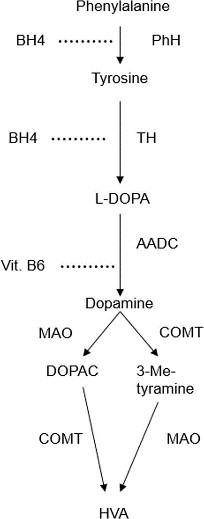
Fig1. Production and metabolism of dopamine. (Milan Beckers, 2022)
DDC Related Signaling Pathway
1. Dopamine synthesis pathway: DDC is a key enzyme in the dopamine synthesis pathway, responsible for decarboxylating dopamine to form norepinephrine. This is the final step in the synthesis of the neurotransmitter dopamine.
2. serotonin synthesis pathway: DDC is also involved in the serotonin synthesis pathway and is responsible for decarboxylating 5-hydroxytryptamine into serotonin, which is the last step in serotonin synthesis.
3. Tryptophan metabolic pathway: The role of DDC in the tryptophan metabolic pathway is to decarboxylate tryptophan into dopamine, which is a precursor to the production of dopamine and serotonin.
DDC Related Diseases
DDC has been linked to a variety of diseases, especially dopamine-related neurological disorders, including: Parkinson's disease, schizophrenia, attention deficit hyperactivity disorder (ADHD), depression, anxiety disorders, and more. In addition, DDC is also involved in the synthesis and secretion of hormones, so its abnormal function may be related to some endocrine system diseases, such as hyperthyroidism.
Bioapplications of DDC
Parkinson's disease patients are commonly treated with L-dopa (a precursor of dopamine), which can enter the brain through the blood-brain barrier and then be converted into dopamine by DDC. In the field of industrial biotechnology, de novo synthesis of dopamine through microbial synthesis technology is achieved, although the current synthesis efficiency is low, but with the advancement of technology, this field is expected to improve. DDC is also used as a biocatalyst for the production of flavors and food additives to enhance food flavor.
Case Study
Case study 1: Nikolaos S Lotsios, 2023
Oxidative stress is known to influence mRNA levels, translation, and proteolysis. The importance of oxidative stress has been demonstrated in several human diseases, including neurodegenerative disorders. L-Dopa decarboxylase (DDC) is the enzyme that converts L-Dopa to dopamine (DA). In spite of a large number of studies, little is known about the biological significance of the enzyme under physiological and pathological conditions.
Here, the researchers investigated the relationship between DDC expression and oxidative stress in human neural and non-neural cells. The data indicated that mRNA and protein expression of DDC was enhanced or remained stable under conditions of ROS induction, despite degradation of total RNA and increased cytotoxicity and apoptosis. Moreover, DDC silencing caused an increase in the H2O2-induced cytotoxicity.
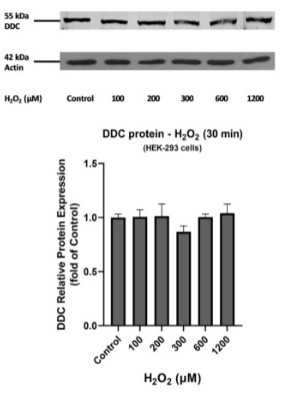
Fig1. Effect of H2O2 on the expression of DDC protein in HEK-293 cells.

Case study 2: Michael V Ugrumov, 2022
Since the 1980s, the concept of dopamine-rich brain centers as clusters of only dopaminergic neurons has been fundamentally revised. It has been shown that, in addition to dopaminergic neurons, most of these centers contain neurons expressing one of the enzymes of dopamine synthesis: tyrosine hydroxylase (TH) or aromatic L-amino acid decarboxylase (AADC).
The researchers have obtained convincing evidence that in rats, the hypothalamic periventricular nucleus (PeVN) is one of the largest dopamine-rich centers, containing dopaminergic and monoenzymatic neurons. Indeed, using double immunostaining for TH and AADC, the PeVN was shown to contain almost three thousand dopaminergic and monoenzymatic neurons. ccording to confocal microscopy, neurons (cell bodies, fibers), which were immunopositive only to TH, only to AADC, or both, are in close topographic relationships with each other and with the 3rd ventricle. These data suggest the mutual regulation of the neurons, as well as the delivery of dopamine and L-DOPA to the third ventricle, which is confirmed by their detection in the cerebrospinal fluid.
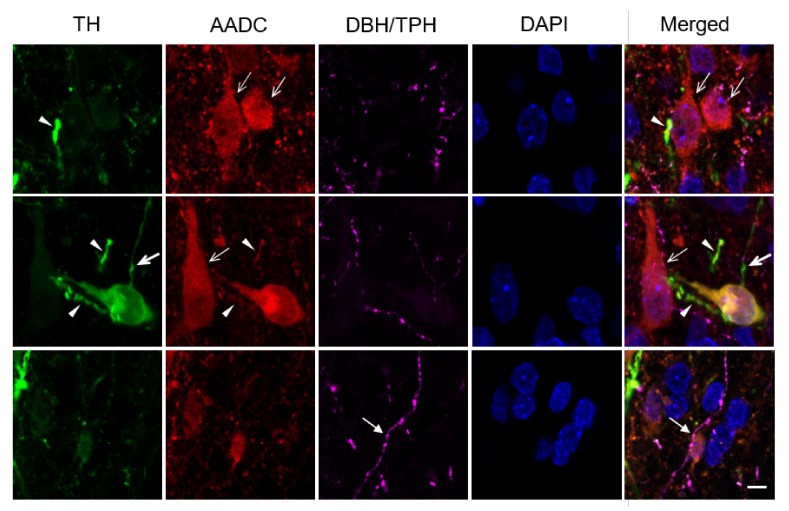
Fig3. Observations in a confocal microscope of contacts of nerve fibers immunopositive.
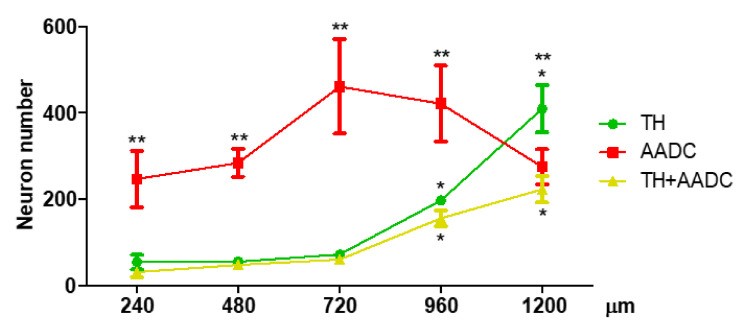
Quality Guarantee
High Purity
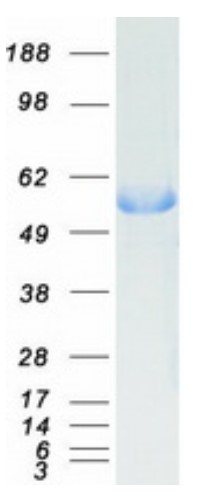
Fig1. SDS-PAGE (DDC-915H) (PROTOCOL for western blot)
.
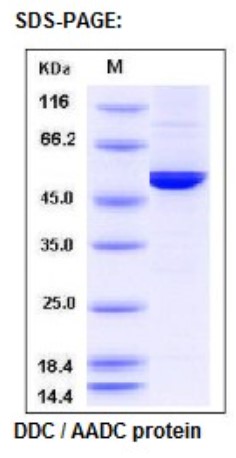
Fig2. SDS-PAGE (Ddc-2510M) (PROTOCOL for western blot)
Involved Pathway
DDC involved in several pathways and played different roles in them. We selected most pathways DDC participated on our site, such as Alcoholism,Amine-derived hormones,Biogenic Amine Synthesis, which may be useful for your reference. Also, other proteins which involved in the same pathway with DDC were listed below. Creative BioMart supplied nearly all the proteins listed, you can search them on our site.
| Pathway Name | Pathway Related Protein |
|---|---|
| Dopaminergic synapse | GNG11,AKT2,GNG7,CREB3,SLC18A2,KCNJ5,SLC18A1,AKT1,PRKACG,SLC6A3 |
| Amine-derived hormones | TPH2,CGA,DBH,DIO2 |
| Biogenic Amine Synthesis | COMT,DBH,CHAT |
| Alcoholism | HIST1H4D,GRIN3A,HIST1H2BA,GM14482,HIST1H2AL,MAPK3,MAOA,DRD2,HIST2H2AC,HIST1H2BP |
| Cocaine addiction | GRIN3B,GRIN2D,GRM2,CDK5,GPSM1,ATF6B,GNAI2,DLG4,PRKACA,DRD2 |
| Dopamine metabolism | NQO1,COMT |
| Catecholamine biosynthesis | DBH,MOXD2 |
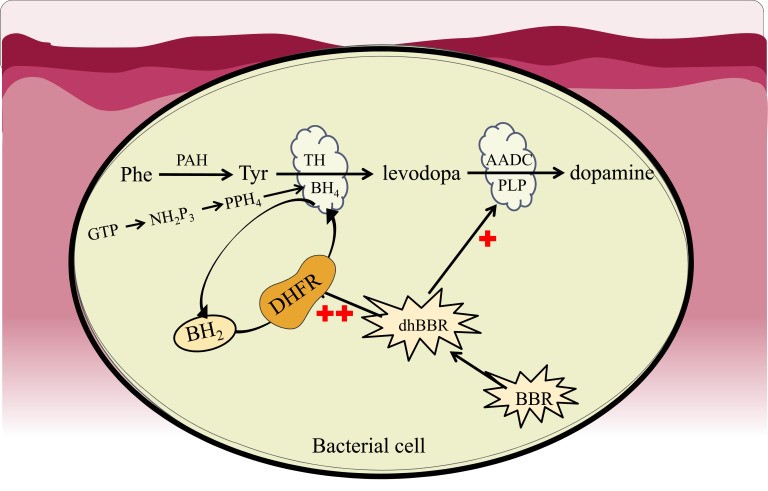
Fig1. Regulation of dopamine biosynthesis in the gut microbiota by BBR. (Kaifei Xu, 2023)
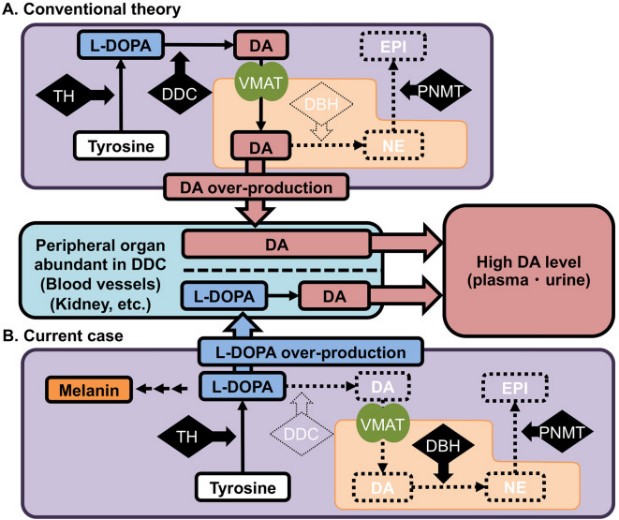
Fig2. (A) The conventional theory of catecholamine synthesis in exclusively DA-producing PPGL. (B) Possibility of exclusively L-DOPA-overproducing PGL. (Masahiro Nezu, 2023)
Protein Function
DDC has several biochemical functions, for example, L-dopa decarboxylase activity,amino acid binding,aromatic-L-amino-acid decarboxylase activity. Some of the functions are cooperated with other proteins, some of the functions could acted by DDC itself. We selected most functions DDC had, and list some proteins which have the same functions with DDC. You can find most of the proteins on our site.
| Function | Related Protein |
|---|---|
| amino acid binding | TH,DPYS,GCHFR,TPH1B,OTC,SHMT2,TPH1,DDAH2,PAH,ASS1 |
| protein domain specific binding | HOMER3,COX4I2,DICER1,FOXA1,SERPINB1A,ARRB2,VPS4A,WNT5A,YWHAZ,GABRR1 |
| pyridoxal phosphate binding | PDXK,HDC,SPTLC2A,PHYKPL,CBS,PYGMA,CTHL,PROSC,CBSA,PYGL |
| protein binding | ALKBH8,ATG12,TPRKB,CDH23,RAB7L1,LSM8,FCGR1A,LIN37,SESTD1,MLST8 |
| enzyme binding | UBE2I,POR,ZFP346,JUN,PLCE1,PCBP2,MDM2,APP,PEX7,ATP2A2 |
Interacting Protein
DDC has direct interactions with proteins and molecules. Those interactions were detected by several methods such as yeast two hybrid, co-IP, pull-down and so on. We selected proteins and molecules interacted with DDC here. Most of them are supplied by our site. Hope this information will be useful for your research of DDC.
AR;Ar;ATF6;RELA
Resources
Related Services
Related Products
References
- Pi, LY; Robinson, PM; et al. Connective Tissue Growth Factor and Integrin alpha v beta 6: A New Pair of Regulators Critical for Ductular Reaction and Biliary Fibrosis in Mice. HEPATOLOGY 61:678-691(2015).
- Yoshida, S; Ikenaga, N; et al. Extrahepatic Platelet-Derived Growth Factor-beta, Delivered by Platelets, Promotes Activation of Hepatic Stellate Cells and Biliary Fibrosis in Mice. GASTROENTEROLOGY 147:1378-1392(2014).



